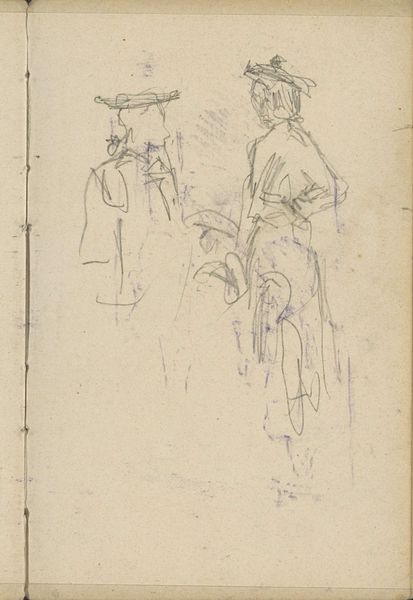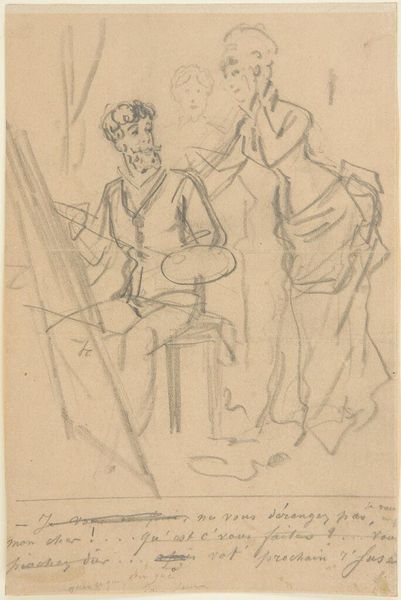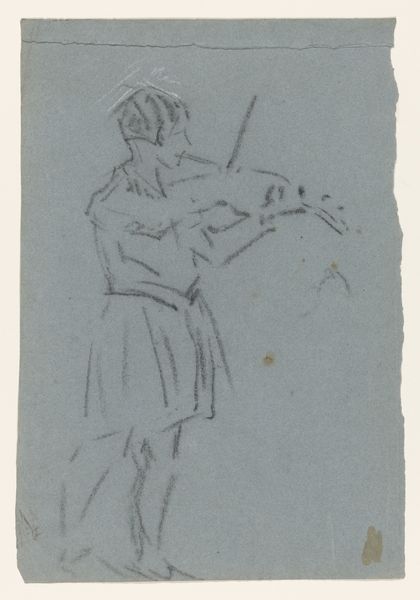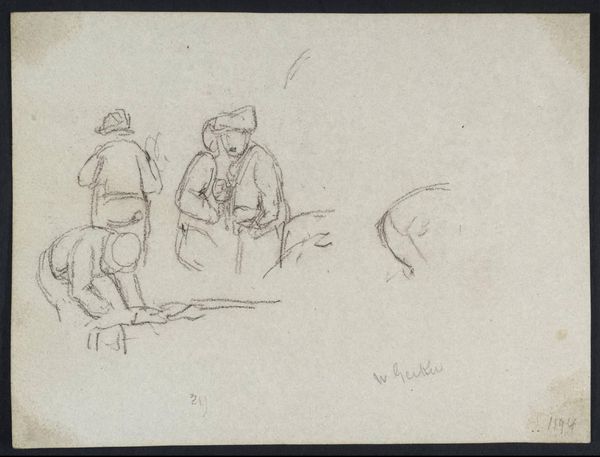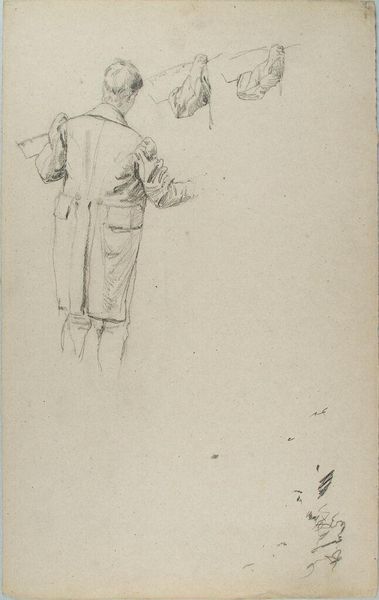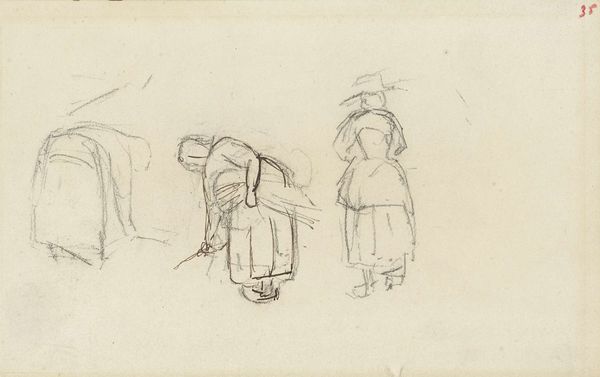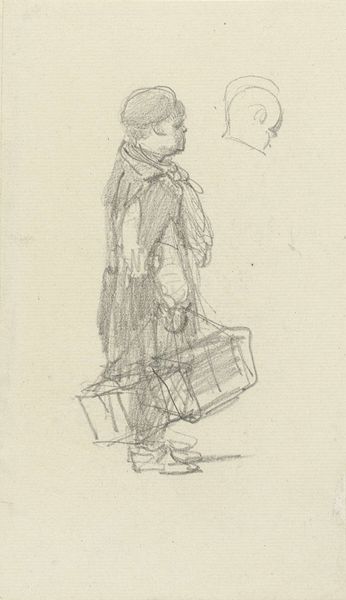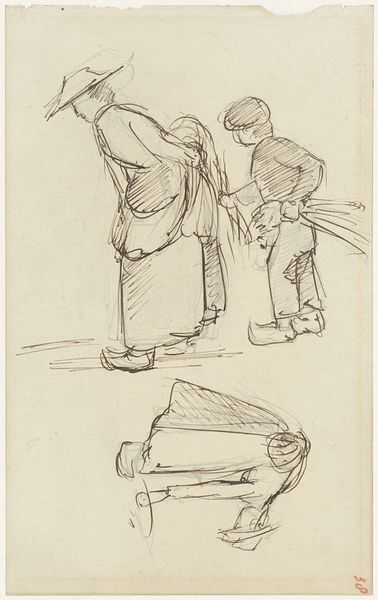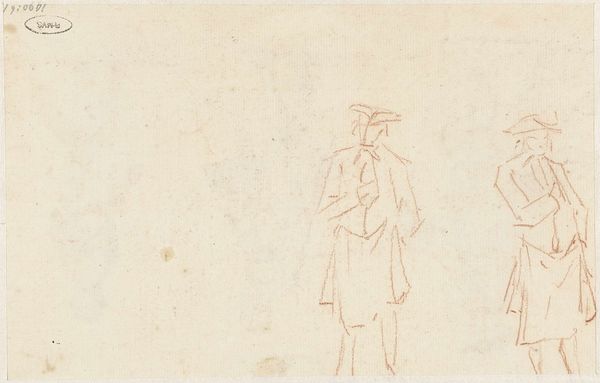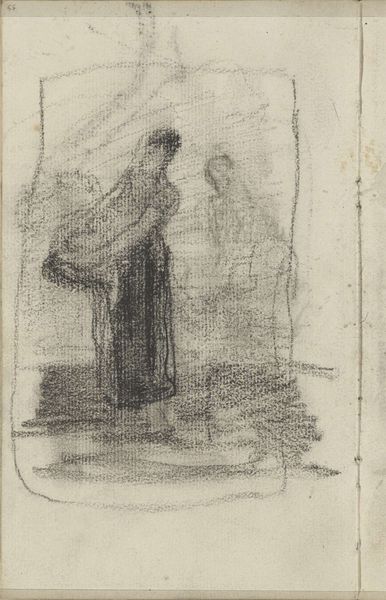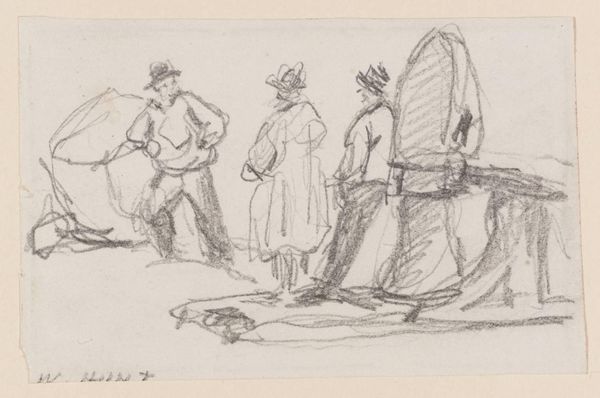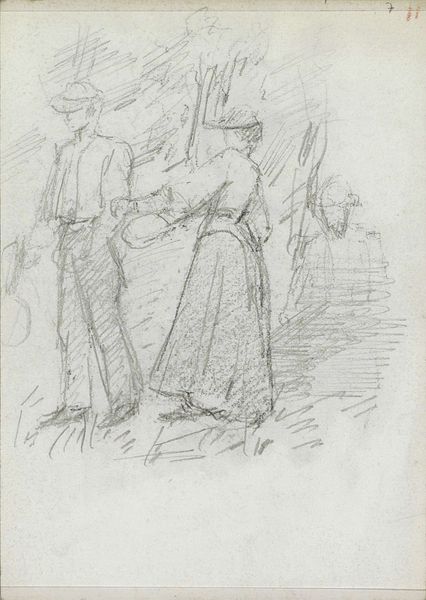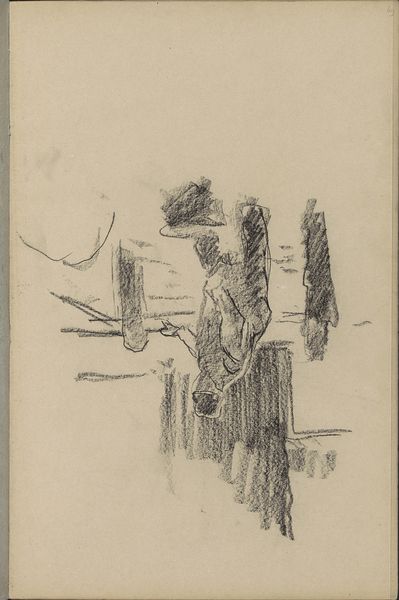
drawing, pencil
#
portrait
#
drawing
#
light pencil work
#
baroque
#
pencil sketch
#
personal sketchbook
#
idea generation sketch
#
ink drawing experimentation
#
pen-ink sketch
#
pencil
#
sketchbook drawing
#
genre-painting
#
storyboard and sketchbook work
#
sketchbook art
#
initial sketch
Dimensions: height 241 mm, width 231 mm
Copyright: Rijks Museum: Open Domain
Curator: Here we have "Twee studies van een trommelende jongen," or "Two Studies of a Drumming Boy," by Cornelis Troost, dating from 1706 to 1750. It's a pencil drawing, currently held at the Rijksmuseum. Editor: My initial impression is one of quiet anticipation. There's something almost dreamlike about the soft pencil strokes and the muted tones, as if we're glimpsing a memory or a half-formed idea. Curator: Precisely. Troost was deeply embedded within the Dutch Golden Age's theatrical circles. His art consistently probed the performative aspects of daily life and civic identity. A simple pencil drawing allowed him a freedom from the heavy societal demands of, say, commissioned portraits. Editor: And these drumming boys? Are they studies for a larger work, or something complete in itself? Given the dates, it's important to consider the socio-political backdrop; were there any colonial implications associated with these young boys being shown with military drum at this period of Dutch colonial expansion? Curator: It is likely these studies would have been a precursor to more formal works; these were typical idea-generation sketches. Consider the period; childhood, particularly working-class childhood, wasn't widely represented sympathetically. What message does it send when artists attempt to incorporate them as elements in allegorical art? Editor: Yes, you’re drawing attention to power dynamics—representation as an act of legitimization. The very act of portraying them brings with it a host of assumptions and societal norms that are worth challenging. The presence of drums and its cultural role, as the precursor to military endeavors might be hinting towards indoctrination. Curator: Absolutely, and these questions allow us to unpack how notions of childhood and civic duty were being shaped. These pencil studies, rather than being simply charming depictions of young boys with a drum, allow access to discourses around childhood, the performance of citizenship, and the subtleties of colonial ambition within 18th-century Dutch society. Editor: Seeing Troost’s rendering of these two figures helps unpack and re-contextualize how visual culture shaped early notions of Dutch identity. Curator: Indeed, they provide insights into an historical performance with continued resonances today.
Comments
No comments
Be the first to comment and join the conversation on the ultimate creative platform.
